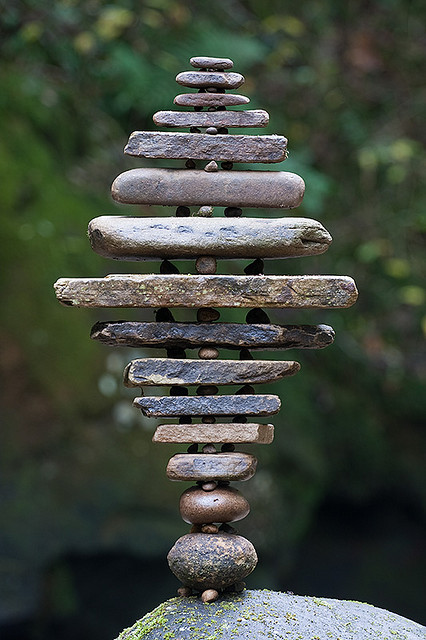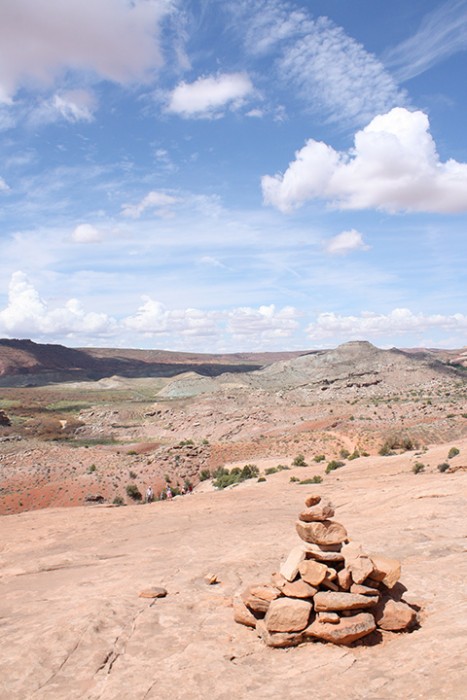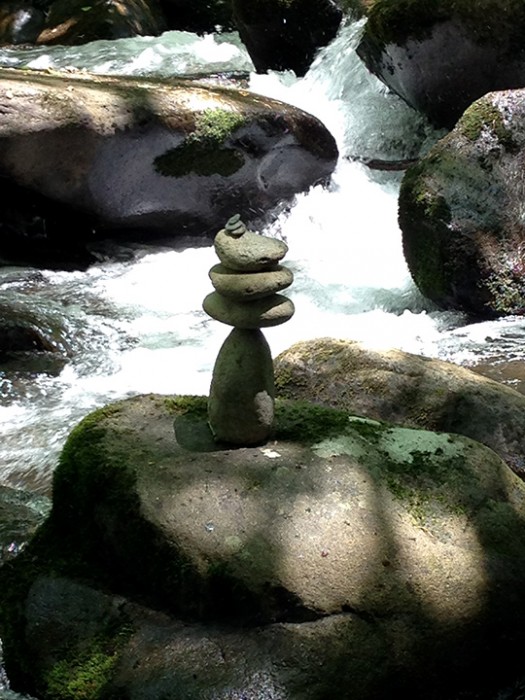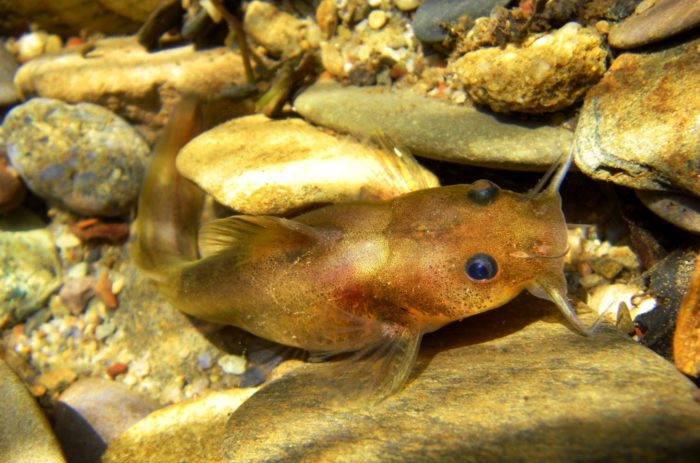by Brent McDaniel, Director of Marketing
Drive down any of the roads in Great Smoky Mountains National Park that follow a river and you can probably spot a cairn — a stack of rocks balanced carefully on top of each other. The word comes from the Gaelic for “heap of stones” and many can be quite beautiful.

Cairns can be good things when they are done right. Properly built cairns help mark trails to keep hikers from getting lost and can endure for decades. As trail markers, cairns keep hikers on a single route, protecting fragile soil and vegetation. In foggy or stormy weather, they can be lifesavers, helping to keep you safely on the trail. Each of these is a critical function of cairns, protecting the mountain landscape and you.

But they have no place in the middle of a river in the Smokies.

Some people stack rocks like this as a form of meditation. Some do it and call it art. More often than not, it makes for a neat Instagram picture and is never thought of again.
But what you may not realize is that stacking river rocks is doing serious damage to the delicate river ecosystem. And it’s not just cairns, the same goes for moving rocks and creating dams to make chutes or pools in a stream for tubing. Aquatic plants and animals make their homes on, under, and around these rocks. Some of the 68 species of fish in the park build their nests in small cavities under rocks. When people move the rocks, the nest is destroyed and the eggs and young fish die.

Algae play a vital role in the river ecosystem as a food source for fish and other aquatic animals, as well as providing oxygen to the stream — you know, the stuff that animals need to breathe. Algae also help purify the water, absorbing nutrients and heavy metals from streams and rivers. But when rocks with algae are removed from the river, an important part of the whole system goes missing.
Aquatic insects need rocks for cover as well. Some aquatic insects can drift off or move when disturbed, but many species attach themselves to the rock and cannot move. When a rock is moved, aquatic insects fall, are crushed by the movement, or dry out and die when the rock is placed out of water.
Salamanders like the Eastern hellbender, which can grow up to 2 feet in length, live in spaces and crevices under river rocks. These amazing creatures have been on this planet for 65 million years but are now listed as Near Threatened in large part due to habitat loss.
If those aren’t reason enough, think about the impact cairns have on other park visitors. If every one of the 10 million people who visit the Smokies every year decided they should build their own cairn, do you think that’s a park you’d want to visit again, up to your ears in stacks of rocks? Personally, I don’t see a big distinction between that stack of rocks and someone carving “Bob was here” into the side of an historic cabin. It’s a momentary, seemingly harmless act that really only has any meaning to you, but impacts every visitor who comes after.
We should all do our part to Leave No Trace — I like to think of it as Leave nothing but footprints, Take nothing but pictures, Kill nothing but time. And one of the fundamental policies of the National Park Service is to preserve natural resources in an unaltered state. Consequently, it is not only a bad idea, but it’s also against the law to move rocks in rivers and streams in the park.
If you feel so moved by the natural serenity around you, try a silent prayer.
If you feel the extreme urge to balance things, try balancing a drink can on your head (because apparently there’s a world record for everything).
And if you just want to see a stacks of things, hit up IHOP on the way home.
For future generations to have the opportunity to enjoy this beautiful park like you and I do, to see undisturbed landscapes and enjoy an abundance of wildlife, leave the park as you found it — it’s really that easy.
Don’t move rocks.
